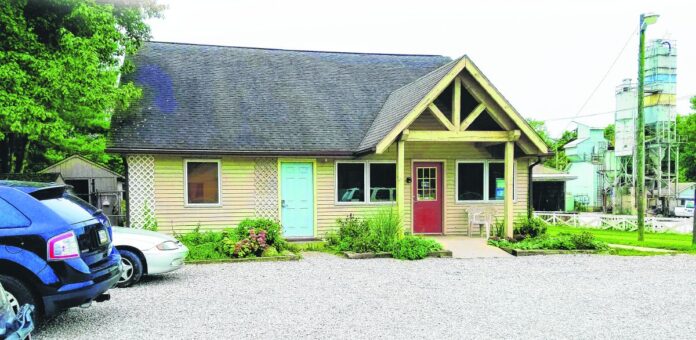
When visitors drive up to the Brown County Humane Society’s shelter on State Road 135 North, they sometimes wonder if it’s a house instead.
“It is tight, cramped,” said Shelter Manager Caity Robertson. “… It is still impressive to me working there, even after a year and a half, that we are able to work around the facility like we are, but it’s definitely a challenge.”
Humane society supporters are hoping they can count on the community to ease this longstanding problem.
The society has launched a major capital campaign to raise $3.2 million to build a new shelter. It will go next to the current shelter, closer to the humane society’s barn. The current shelter likely will stay as extra work space or storage, said board President Sue Ann Werling said.
[sc:text-divider text-divider-title=”Story continues below gallery” ]As of last week, the group had received pledges totaling $2,664,948, leaving only $535,052 to raise. But that last half-million or so is critical, Werling said, and because it’s expected to come in in smaller donations, it could take awhile.
The Werling Charitable Foundation is matching private donations dollar for dollar up to $1 million. So far, $442,984 worth of match money has not been used yet.
The current, 4,000-square-foot shelter building was built in 1987. On average, shelter staff and volunteers care for 730 animals per year.
“We have so many things that are just getting to their maximum uses,” Robertson explained in a fundraising video. “Our laundry facilities are starting to fail. Our kennels are starting to deteriorate. And that’s not good for the animals’ health. It makes staff’s jobs harder being able to clean appropriately, keep the animals healthy.”
If animals do get sick, there aren’t really places to house them away from other animals, Robertson said.
In addition, the building’s foundation is cracked and shifting, water leaks have caused major damage, the roof needs to be replaced and the ventilation system is inadequate.
“Overall, the entire facility has done a great job, but it’s reaching its breaking point,” Robertson said.
The shelter operates primarily on donations and a contract with county government. Currently, the shelter gets $45,000 from that contract, plus $15,000 to subsidize its S.P.O.T. program.
S.P.O.T. began in 2009 in an effort to reduce the number of animals coming into the shelter. A record number of animals had been taken in the year before, said Jane Weatherford, society treasurer. “In 2008, we said, ‘Yes, we’re going to save every one that we can, but we’ve got to reduce that population. And that’s when we put together the plan, or the S.P.O.T. program.”
In six years, the number of animals coming into the shelter was reduced by 58 percent. In 2017, the shelter achieved a 98-percent save rate — one of the highest in the nation.
In addition to helping people spay or neuter their pets — costing owners as little as $1 — S.P.O.T. distributes an average of 90 tons of pet food to families in need, delivers 50 bales of straw to help warm outdoor pets, provides 240 annual vaccines, and does other community outreach such as home visits and educational magazines for children.
Board members plan for the new facility to have more space not only for the animals and workers to care for them, but also for the community to become more immersed in the shelter.
Floor plans for the 9,100-square-foot building include indoor meet-and-greet rooms for potential adopters to get to know animals; an area for people to privately meet with shelter staff to surrender their pets; and an education center for community events.
The animals will get more space as well. In addition to quarantine rooms for newly arrived and sick pets, plans include free-roaming cat rooms “with porches for a more natural, less stressful environment; “cat condos” for “cats who prefer privacy”; an exam room; new dog kennels; a dedicated grooming area; a dog behavior assessment and training room; and more natural light.
Staff and volunteers will benefit from a kitchenette and lockers; office space; more storage space for supplies; a garage for shelter vehicles; and separate laundry, food preparation and equipment areas.
Shelter Planners of America is designing the project. No groundbreaking date has been set.
“What we’ve been able to accomplish with such a small facility has been amazing,” Werling said. “We need to take that next step to leave a facility to future generations that we’ll be able to educate and train.
“We’re caring for those that can’t care for themselves. And if we don’t do it, there’s no one else who will.”
[sc:pullout-title pullout-title=”How to help” ][sc:pullout-text-begin]
Visit the capital campaign website at unleashbc.com, where you can see the floor plan, watch the campaign video and donate to support the new shelter.
Other ways to donate:
- Call 317-946-8235
- Email [email protected]
- Mail a pledge card to Brown County Humane Society Capital Campaign, P.O. Box 430, Nashville, IN 47448. Pledges can be paid over as many as three years.




